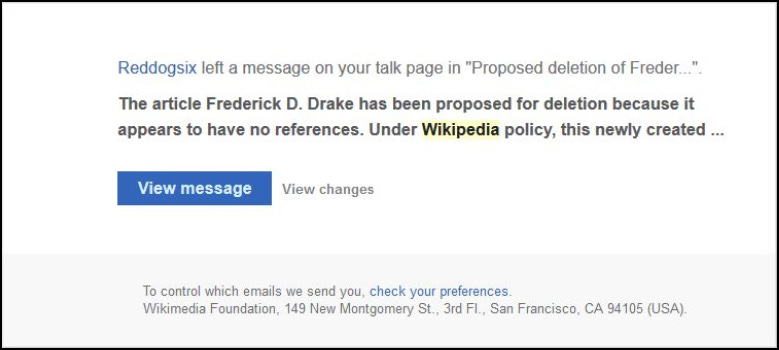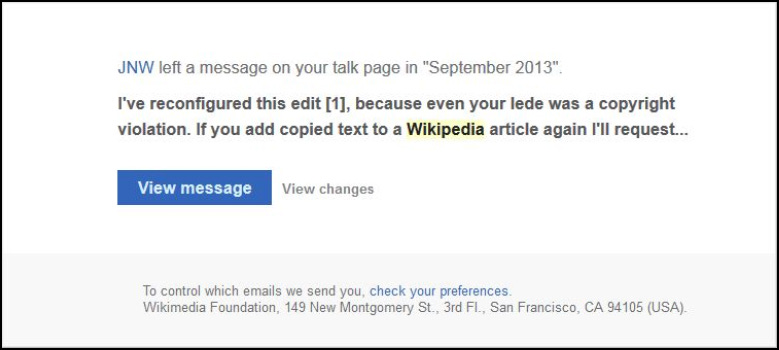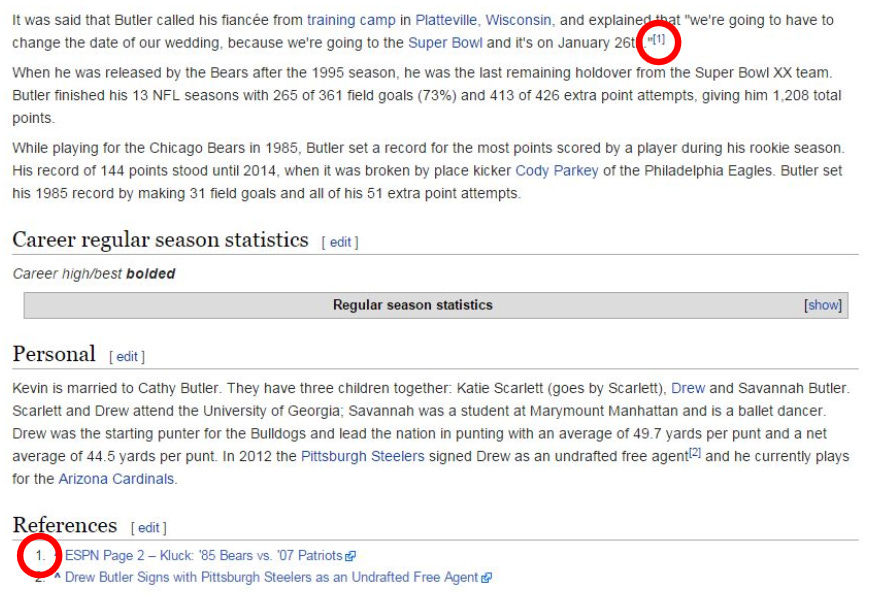Should Students Really Never Use Wikipedia?
What follows is a selection from my eBook single Teaching The Research Paper.
The Truth About Wikipedia
Most teachers have this notion that Wikipedia can be edited by anyone and is therefore unreliable and full of made up facts. While it’s true that Wikipedia isn’t 100% accurate, the vast majority of the information on Wikipedia is as accurate, or more accurate, than the textbooks in your classroom.
When someone submits an entry or a change to an entry, it undergoes a strict review process by Wikipedia’s community of volunteer editors. See what happened when I, as an experiment, tried adding something that they deemed unreliable:
Within minutes of submission, my entry was flagged and removed because it lacked proper references and potentially violated copyright. After re-submitting my entry several times, it continued to get flagged, as did my account which was threatened with suspension for not abiding by Wikipedia’s stringent protocol.
Use Wikipedia Responsibly
Instead of putting a blanket ban on Wikipedia, teach your students how to use Wikipedia responsibly.
Since every fact entered into Wikipedia requires a proper citation, Wikipedia is a great place to find sources. If your students find something on Wikipedia, have them chase the reference to the original source.
In this way, teaching the research paper offers a valuable opportunity to teach your students to validate information. The image below features Wikipedia entry with an in-text citation and its corresponding reference.







Your argument for using Wikipedia makes a lot of sense, but I still have concerns about its accuracy. Take the Wikipedia page on Punan (Punan Bah)—it mixes up two completely different groups just because they share the same exonym, “Punan.”
One big problem is that the page doesn’t separate Punan Bah in Sarawak from Punan Batu in Kalimantan. Punan Bah aren’t nomadic, but Punan Batu are. That’s a crucial distinction, yet Wikipedia glosses over it. In fact, recent studies show that many nomadic groups in Kalimantan have been lumped together as “Punan,” even though they actually call themselves Aehong, Belusu, or other names.
So, if students turn to Wikipedia to learn about the Punan—which, let’s be honest, many do—they’re getting an inaccurate and misleading picture. That’s not just a minor mistake; it skews how people understand indigenous identities and history.